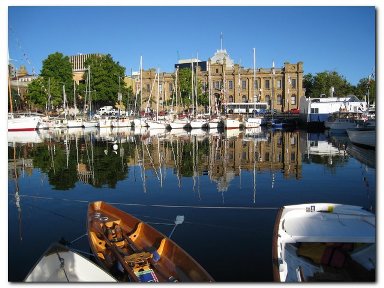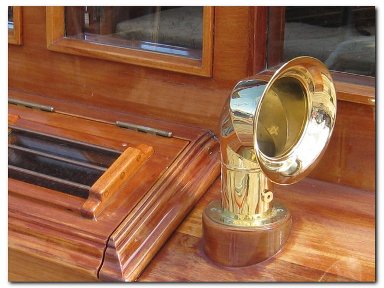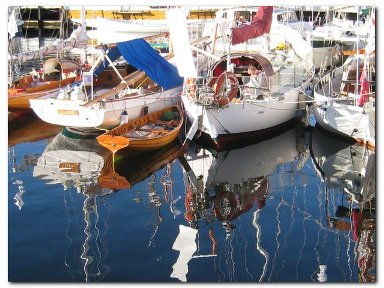By John Kingston
Hobart, the capital of Australia’s island state, is a small, comfortable city (pop. 250,000). Hobart enjoys a benign, temperate climate, and has the highest recorded annual sunshine hours of any Australian capital bar one. The weather is controlled mainly by the seas surrounding the island. Mt. Wellington, at a tad over 4000 feet, is an imposing backdrop. The summit is reachable by car in about half an hour from the city center. Be warned, though — it can get a little chilly.
Also about half an hour away, at Franklin, is the Wooden Boat Building School on the banks of the Huon River. Boats are built mainly on commission using iconic timbers found only in Tasmania. The world-renowned huon pine, celery top pine, king billy and other Tasmanian timbers are revered by boat builders.
Also south of Hobart are the extensive, enticing, but little-known cruising waters of the D’Entrecasteaux Channel, embracing the wide estuaries of the Derwent and Huon rivers, all protected by the 33-mile-long Bruny Island to the east. In fact, if you choose to, you could cruise up the Huon for about 25 miles and visit the Wooden Boat Building Centre that way. Why not fire up Google Earth, type in Hobart, Tasmania, and then broaden your view a bit? You’ll see what I mean.
Every two years, Hobart hosts the Hobart Wooden Boat Festival, the biggest and arguably the best — certainly in the southern hemisphere — boat show. Now, you are too late for the 2011 festival (Feb. 11, 12, 13, 14) but give thought to arranging to visit Hobart for the next festival in 2013. It is not too soon to start preparing.
 This year more than 100,000 visitors saw over 500 wooden crafts — local, interstate, and international — ranging in size from the smallest dinghy to ships such as the 174-foot Princess Iluka, built from huon pine in Hobart but now based in Brisbane, Queensland, and the recently restored steam yacht Preana. There are boat building displays, historical movies, models, and trade and equipment arenas, plus plenty of food and refreshments.
This year more than 100,000 visitors saw over 500 wooden crafts — local, interstate, and international — ranging in size from the smallest dinghy to ships such as the 174-foot Princess Iluka, built from huon pine in Hobart but now based in Brisbane, Queensland, and the recently restored steam yacht Preana. There are boat building displays, historical movies, models, and trade and equipment arenas, plus plenty of food and refreshments.

While looking at one outstanding example of the shipwrights’ skills my wife made the comment, “That is too good to put in the water; it should be in someone’s lounge room.” I could do nothing but agree. Such is the quality of workmanship on display.
Over the four days of the festival there are ongoing programs to keep everybody entertained. In the dirty boat building competition, teams are given the raw materials to build, paint, and sail a boat over the four days. The culmination of this activity is to triumphantly (or otherwise) sail your masterpiece in Constitution Dock on the last day.

Amazingly, due to enthusiastic local and government sponsorship, entry is free for all four days, which is a real bonus. There are different activities programmed for each day, so you can easily occupy yourself for the length of the festival.
Seldom can one see such a fleet of wooden vessels so easily in such a pleasant spot.
If you’d like to purchase this article for your publication, click here to contact the author directly.
Verify an online pharmacy before you buy drugs
